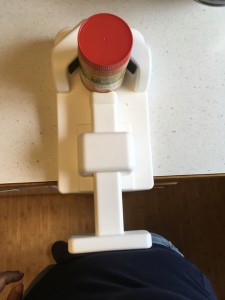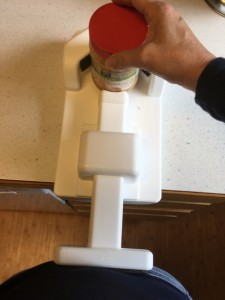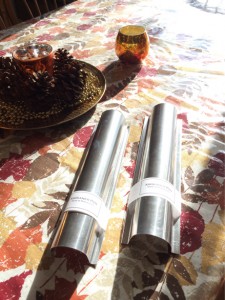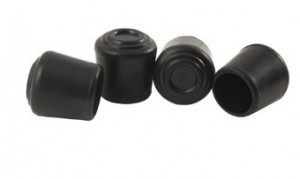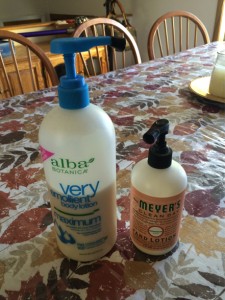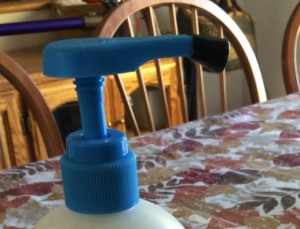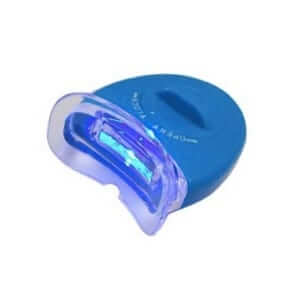If you’re wondering how to prepare for a hip replacement, and what to expect from that hip replacement, let me tell you my experience. As those of you who follow me on Facebook (and if you don’t yet, I invite you to do so) know, I had a total hip replacement 19 days ago (I’m writing this on August 12, 2017). Let me tell you that it has been nothing like I expected or was lead to believe. Here is what you need to know before your hip replacement, and what you need in order to prepare for your hip replacement, including links to things that will make your life much easier. Here’s what you need, and will want, to know. Now, I had a posterior hip replacement, so if you are having an anterior hip replacement your mileage may vary, but only by a few miles per gallon. (Note: Text links are not affiliate links, because I want you to trust what I’m saying. Images are affiliate links only because that’s the way that Amazon makes it easy to embed them. So click on the text links, not the pictures (unless you feel you want to reward me for this info. :~) ))
I was surprised to discover is that hip replacement is much like childbirth inasmuch as you are told very similar lies. If you or your spouse has ever given birth, you know that one of the biggest lies out there is “Oh, you won’t even remember the pain!” BS! Childbirth hurts like h*ll, and I bloody well remember it even though the last time was nearly 20 years ago. But I digress…
Hip Replacements and Pain
The first lie is “the pain from the hip replacement is much better than the pain your hip is giving you, in fact you will get immediate relief.” It is true that you won’t feel any pain in your hip, because they have basically decapitated your femur and removed those nerves along with it.
What they don’t tell you is that the pain in the muscles that were manipulated to get the appliance in, etc., and from the incision itself, is going to be hellatious.
Fortunately, they give you great painkillers for this.
Unfortunately, those painkillers may very well cause you to become so constipated (look it up) that you may end up impacted (look that up too). So if you’re planning on taking the narcotics, plan ahead. Finding a balance between too loose (you do not want to suddenly need the bathroom urgently, because you won’t be able to make it) and too-damned-hard is tricky. Oh, you also can’t take most laxatives or in fact most over-the-counter preparations of any kind, because you’re going to be on blood thinners, which are negatively affected by just about everything (more on that later).
How Quickly You Will be Back to Your Old Self
The next lie is “I/Someone I know had a hip replacement and they were walking/running/dancing/skiing/mountaineering/paragliding the following week.”
Now, occasionally some of this is true, but what they didn’t tell you (or didn’t know) is that person’s doctor told them to barely walk on it at all for as many as six weeks. Those people who say they were up and running within days ignored their doctor’s advice. Don’t believe me? Go ahead and start doing some online research for total hip replacement recuperation guidelines. In fact, do it anyways because it will reveal to you all of the restrictions that you didn’t know you were going to be under. Some of them forever.
I hasten to add that this isn’t to say that getting a total hip replacement isn’t worth it – it totally is (see what I did there?) – but going in eyes wide open is so much better than having nasty surprises when you wake up on the other side.
Anyway, where was I? Oh yes, you should expect to only be allowed to “toe touch” with your operated-on leg for the first several weeks – or if your hip install went supremely well, maybe you will be allowed to put 20-to-25% of your weight on that leg (however one determines that) when you are standing still, such as in the shower or “at the sink”, as my surgical team told me (because yeah, you’re going to feel like doing dishes). Either way, you will be using a walker and/or crutches for the first few weeks. All. The. Time.
On the other hand, you may end up like I did, not being allowed to put any weight on that leg – meaning I’m not even allowed to toe touch with that leg for 6 weeks. Which means hopping around on one leg with a walker or crutches, which gets old really fast. Not to mention that it’s really painful.
So you will end up sitting a lot. Only guess what. You also are not allowed to sit upright (well, technically you are allowed to sit upright but not a smidgen more than upright – anything more acute than a 90° angle is strictly forbidden or you may dislocate your new hip.
So, if you are anything like me, and wanting to make this not-being-allowed-to-walk-on-your-operated-leg-or-sit-straight-up as non-unpleasant and workable as possible, you may want to get a wheelchair or two.
Now, before I talk more about this, I realize that buying a wheelchair, let alone two, may sound extravagant, but hear me out.
First, you do not want to dislocate that new hip!
Second, unless you plan to lay around in bed all day for weeks, you are going to want to be able to get around easily, both in your own house, and while you are out of the house.
Third, they are a legitimate medical expense which (my tax attorney promises me) you can deduct from your taxes. (Note that your medical expenses need to exceed 10% of your adjusted gross income for the year in which you want to deduct them in order to qualify. If you are having major surgery, the odds are good that your medical expenses will exceed that.) I happen to be extra “lucky” in that I broke my wrist dancing earlier this year, and my out of pocket expenses for that surgery satisfied my deductible, so my hip replacement itself was on the house (i.e. my insurance paid for it).
Fourth, and even if you can’t deduct them as a medical expense, when you are done with all of your various medical equipment you can donate it to any number of charities, and take the charitable deduction on your taxes, for which there is no minimum (just don’t try to both claim it as a medical expense and as a charitable deduction).
Ok, so, as soon as I realized that I was going to be hop-along-Annie for six weeks, I ordered this wheelchair on Amazon (remember that the text link is not an affiliate link, but the image is):
Now, the cool thing about this wheelchair is that for what you get, it’s reasonably inexpensive at $188 which includes free 2-day Prime shipping.
Also, it’s pretty lightweight, and, coolest of all, the arms flip up and out of the way (easily) so that you can belly right up to any dining table.
Wheelchair with Arms Flipped Up and Folded Back

This was the first wheelchair that I got. But after a couple of days with it, and being in it for hours on end, my back started to hurt from the strain of constantly making sure I was not fully upright and risking bending at fewer than 90°. Don’t get me wrong, it is great for a couple of hours, but not for much more than that.
So, I thought to myself, “How cool would it be if there were such a thing as a reclining wheelchair??”
Then I thought “I wonder if there is such a thing as a reclining wheelchair!?”
Then I got on Amazon and discovered that there is!
Now, this wheelchair is a bit more expensive than the first one (~$300 and free shipping), but if you can only get one wheelchair, this is the one to get – but be warned that it is bigger, and heavier, and so not as portable.
This is the reclining wheelchair.
I should mention that I am sitting in this wheelchair as I type this. In fact, I’ve been in it for the last 6 hours, and I feel great. Yesterday I was in it for at least 12 hours (of course getting up and walkering to the bathroom, etc.) and felt great. This wheelchair is a gamechanger for anyone who has had a hip replacement and is under those no-weight and no-sitting-at-91°+ restrictions.
So what did I do with the first wheelchair? Remember how I mentioned that it was quite portable, and that the reclining wheelchair..isn’t?
So, the first wheelchair now lives in my car, where it is perfect for being out and about for a couple of hours, and for going out to eat (because of those nifty swing-away arms).
Of course, even with a wheelchair or two, you will need crutches or a walker, or both. I strongly recommend at least one walker, because they are a hell of a lot more stable than crutches. Actually I recommend two or more walkers (one for getting in and out of the car, for example), another as your regular in-house walker that stays in your house.
Now, your surgeon can write a prescription for a walker and crutches (and he may even write one for a wheelchair) in which case your insurance may cover it.
Here’s what you need to know: if your house, like my house, has any narrow doors, any standard walker is unlikely to fit through them full-frontal (and you do not want to be twisting around sideways to get through the door). In my case, my 1970s house has 23″ (twenty-three inch) doors on all the bathrooms. That’s narrow, folks! Take into account the door jam, and the door edge when the door is open, and that brings the navigable opening down to 21″ inches, 22″ if you’re lucky.
One of My Bathrooms – That’s One Narrow Doorway!

Guess what? Walkers are almost universally 23-24″ wide at the base (you have to measure at the bottom, across the “feet” of the walker, as they are wider at the base than at the top, for stability).
I’ve done a lot of research, and there is one company (Hugo) that used to make a 20″ walker. The operative term is “used to”. Hugo’s (very well reviewed, and deservedly so) walkers are now all 23.4″ walkers. (I found what was probably the last 20″ Hugo walker on eBay; eat your heart out.)
However, there is one (and so far as I could determine after lots of research only one) walker that you can ‘hack’ to bring its widest part down to 20.5″.
It’s this walker.
The ‘hack’ is putting the right wheel on the left leg, and vice versa. This has the effect of putting the wheels on the inside instead of the outside, bringing the widest part (the base of the legs) down to 20.5″. It’s very easy to do – almost like they expected people to do it. :~)
As you can see in this picture, this allows the walker to just barely fit through my crazy-narrow doorways. (I almost fell over trying to take this picture – don’t try this at home.)
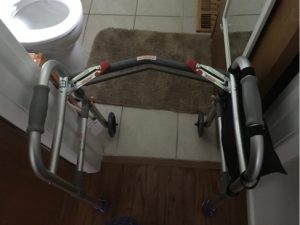
Back to Blood Thinners and Other Clot Prevention
As I mentioned above, you will be on blood thinners (probably Coumadin) for the first month. Not only does this mean that you can’t have just about any over-the-counter medication or preparation (Advil and other NSAIDs are out, Pepto Bismal is right out, pretty much everything is right out), but it also means that you may need to change your diet and it will mean that you have to normalize your diet so that you are eating roughly the same thing every day for that month that you are on blood thinners.
In reality, it’s not what you eat that you need to normalize, but your Vitamin K intake that you need to standardize, because Vitamin K is the coagulating factor, and of course the reason you are on blood thinners is so that you don’t get a clot. The more Vitamin K you eat, the higher the dose of blood thinner you will need, and if you don’t eat roughly the same amount of Vitamin K every day, then your doctor won’t be able to regulate how your blood is clotting. They monitor this by having you take several blood tests over the course of the month.
Now, in my case I had to radically change my diet, because I’m a strict vegetarian eating a very healthful (usually) diet, so I get a ton of Vitamin K (usually a good thing). Leafy greens are out. In fact pretty much anything green is out, including green herbs, green vegetables, etc.. Most nuts are out. Nut oils and vegetable oils are out. Onions, garlic and ginger are out. Chia seeds are out. Chamomile is out (in fact any herbal tea is out, although black tea is just fine). And on and on.
I hasten to add that these things don’t have to be out if you have someone who will make sure that you are getting roughly the same amount of Vitamin K every day. So if you want to have a big old leafy green salad, you need to have roughly that same thing every day. In my case, it is a whole lot easier to just avoid it all.
In addition to those blood thinners, your surgeon may also have you wear compression stockings. Ones that come all the way up to your thighs. 24 hours a day. For weeks. Which is just as well that it’s round the clock because you can’t bend to take them off or put them back on.
I HATED those damned compression stockings. They made it very difficult to sleep at night. I was allowed to take them off at 2 1/2 weeks and I was thrilled.
If your experience is like mine, you will wake up from surgery with those stockings already on you. And on top of that, your legs will be inside these pneumatic squeezy things that squeeze your legs every minute (they are very serious about avoiding clots, because without all of these clot avoidance measures the odds of someone who has just had hip surgery developing a blood clot is apparently very high).
I didn’t mind the leg squeezers, but I sure did hate those stockings!
Toileting
Going to the bathroom when you’ve just had hip replacement surgery presents unique challenges. You’re not allowed to sit at anything more acute than 90°, let alone bend forward to wipe. Some recommendations say that you should not twist around, and in any event you won’t want to because your incision and muscles will yell at you.
Everybody is going to tell you to get a raised toilet seat; in fact your surgeon can write you a prescription for one.
This is because for people who are average height (whatever that is) or on the taller side, sitting on a normal height toilet seat necessarily pitches you into a more acute angle than 90°.
I’m 5’3. That damn raised toilet seat made me feel like Edith Ann in that big old rocking chair. It had precisely the opposite effect than intended, because my feet didn’t even reach the floor, so my hips were definitely forced into a dangerous angle. Fortunately, I’d gotten all of this equipment a few weeks before the big day, so that I could practice with it, and so I discovered this problem when I could still do something about it.
What I did about it was rip that raised toilet seat out, and upgrade my regular toilet seat to this amazing bidet toilet seat.
This seat was easy for me to install (took about 20 minutes), and in one fell swoop it dispensed with both the “how to effectively wipe” problem, and the matter of keeping me clean ‘down there’ when, as it turned out, I wasn’t going to be up to trying to take a shower for the first couple of weeks.
After a lot of research I settled on this particular bidet because a) it got wonderful reviews, and b) it actually heats the water, and c) it has several different functions (posterior, feminine area, etc… it even has a dryer!)
I don’t know what I would have done without it.
Now, all that said, even if a raised toilet seat is not for you, you will need handrails on either side of your toilet (raised toilet seats come with the handrails included).
There are two types of handrails you can get for your toilet: handrails that attach to your toilet seat’s bolts, and toilet handrails that are free-standing.
I have no opinion on these, because I cannibalized a free-standing bedside commode that I happened to have, and used the handrails from that around my be-bidetted toilet.
Underwear
While we’re in that area, let me take a moment to talk with you about underwear.
You are going to have an incision that is several inches long, starting on your hip, and running down towards your leg.
That means that the leg holes for many styles of regular panty or briefs are going to hit right across your incision. Ouch.
So, before my surgery, I started searching for various types of panty styles that would be comfortable and not binding on my incision, and with a length that would not have the elastic of the leg opening laying right on my incision.
I ordered several styles of underwear that I thought might work. I did this before my surgery, so that they would be ready when I got home. And when I did get home, and tried them on (which in and of itself was a chore, remember you can’t bend that operated-on leg less than a 90° angle, so you have to keep that leg pointed away and down, and use a reacher grabber tool (see below) to ease the panty over your foot and up your leg), I discovered that all of them were very uncomfortable on my poor incised hip…except one. Now, to be honest, as I opened all of the packages, before going in for my surgery, I was pretty sure that these ones would be comfy, it was kind of obvious right off the bat. But I still tried all of the others on anyways.
These boy short briefs not only were the only style that wasn’t uncomfortable; they are in fact extremely comfortable!
As I said in my review of them on Amazon, “The moment I put them on I felt like… well… you know that feeling when you put on your favourite pair of old, broken-in jeans? That “Aaaaaah” moment? That is how these briefs felt from the very first time that I put them on (which was the day after surgery).”
They are super soft, yet not at all clingy. And because you want to avoid having them irritate your incision, which at least on me they completely cover, so no edge is touching my incision, I strongly recommend that you order them one size up from the size that you would ordinarily order. That way, instead of them being form fitting, like in the picture, they will allow a tiny bit of room so that they don’t ride on your incision.
Men: You are probably already familiar with soft cotton boxer briefs. If you don’t wear them, now is the time to start. Get them a size larger than you normally would.
Sleeping
If your hip surgery goes anything like mine, you will wake up to find a pillow stuffed in your groin. Well, not in your groin, but groin-adjacent.
The reason for the pillow, or at least one of the primary reasons, is to make sure that you do not rotate your operated-on hip while you are sleeping, or bring it in closer to the midline of your body than a neutral position (which is also why you are not allowed to cross your legs).
Depending on what type of hip replacement you have (posterior or anterior, and maybe even on the type of appliance they use) your surgeon may tell you that you must sleep on your back for the first few weeks. (This was horrible for me – that combined with the d*mned compression stockings made for many nights where I got little sleep. Now, I don’t believe in taking sleep medications, but I was ready then! But..nooooo..no sleeping meds because… blood thinners. The only sleep med I could take was Benadryl, which didn’t touch it. But I digress, again.)
Eventually you will be allowed to sleep on your side, but only with a pillow between your knees and ankles, so that, again, your operated-on leg doesn’t stray across that midline, into the danger zone. At some point you may be able to do away with the pillow – I don’t actually know yet what my own surgeon’s rule is on that, I’ll be asking at my 6-week check.
Now, I ended up ordering and trying six..count ’em, 6 different pillows promising comfort for your legs, in varying shapes and sizes, and all but one of them were awful. Fortunately that other one is wonderful.
That pillow is this Sleep Yoga brand Knee Pillow.
This pillow really is ideal. First of all, it’s long enough to actually pad both your knees and your ankles (which is super important to ensure that your operated-on leg stays in a neutral position).
It’s also, at least for me, just the right thickness, while being not too firm, and not too soft. That’s very Goldilocksian, I realize, but you are going to find that it’s critical that what you have between your legs is just the right fit (yeah, I know). Otherwise you will not only be too uncomfortable to sleep, but it can also cause pain at your incision and for those poor muscles that have been ..well, you don’t want to know (I actually read my operative report… my advice is do not read the nitty gritty details about what a hip replacement surgery entails before your own surgery. And only after if you are sure you can stomach it).
Various Things That You Will Want to Make Life After Hip Replacement Surgery Easier
Here are some things that, over the weeks following my own total hip replacement surgery, I found made life much easier.
Reacher Grabber Tools
First, and foremost, is the reacher grabber tool (reacher grabber, not grabber reacher, whom I think is Jack Reacher’s cousin). Now, the ones that come in ‘hip surgery kits’ (both on Amazon, and that your surgical center may give you) SUCK. I don’t know why they are rated 4 stars out of 5 on Amazon, but if you read the negative reviews, they all say the same thing that I found to be the case.
The problem with some reacher grabber tools is that (as many reviews say), the elastic attached to the ‘jaw’ of the grabber doesn’t always retract, so that the claw stays shut. In fact, on the two that I have, the jaw sometimes twists and get stucks up on the side of the bar, so that the claw is jammed shut!
Which is why I recommend this reacher grabber tool instead. In fact, it’s so good that I bought two more (hint: you will want to have reacher grabber tools strewn about the house in several rooms).
Weirdly, at the time that I’m writing this, the listing for that reacher grabber on Amazon says that they are currently not shipping it “because customers have told us there may be something wrong with our inventory of the item, the way we are shipping it, or the way it’s described here.” I’m guessing that by the time you read this it will be fixed, but just in case not, here are two more reacher grabbers to check out.
This reacher grabber tool is made by the same company, Vive, as the one that I like so well. The head is a bit different, in fact it looks like it might work even a bit better than the ones I have (if that’s even possible!):
And this other reacher grabber tool looks identical to the one that I like so well, other than it having blue bits, although I note that it’s made (or at least branded) by the company (RMS) that makes the reacher grabber that I dislike so much.
A Tray to Carry Stuff on Your Lap While in a Wheelchair
If you are going to get a wheelchair (and I really do recommend it), both of your hands will be full of, you know, wheel, as you move about your house. I found that this tray is the perfect size to sit right on your lap as you are wheeling around, and it has nice deep sides (2″ deep) to keep things in the tray rather than tumbling off the edge.
Of course, if your house is anything like mine, you may find that on occasion your lap is full of cat, instead.
Gripper Pad Rounds
You will also want to line your tray with a few of these round gripper pads to make sure that things that you put in your tray on your lap don’t slide around while you are wheeling through the house. You could also get a roll of the same material and cut it to fit, but these disks are so useful for all kinds of things, plus they come in a package of 12 for $6. How can you go wrong? I actually first discovered these when I broke my wrist, as they are great for keeping something from sliding around the counter when you are trying to open it.
A Tip-Proof Coffee Cup
I have had two of these HotJo brand tip-proof travel mugs for decades. They are fantastic. They are solid stoneware, a generous 18 ounces, and the recessed lid clips in. And they are truly tip-proof.
They are exactly what you want for ferrying your hot coffee or tea, in your tray, from the kitchen to your living room/dining room/desk/table/bed.
Plus, if you, like me, like sipping your beverage through a metal straw (because plastic straws leach BPA and other nasties when used with hot beverages, and some even melt), the sip hole in the lid perfectly accommodates those metal straws!
You can get 4 of these metal straws for $7, and they last forever.
A Small Crossbody Bag
A small crossbody bag will become your best friend. You will find yourself wearing and using it constantly to carry small things (your phone, a prescription bottle, your glasses, etc.), and it will be especially handy while you are using your walker or wheelchair.
If you don’t have one, there are tons available on Amazon like this small crossbody bag for men or women for $19.99.
A Walker ‘Saddlebag’
I was really lucky in that my Hugo walker came with not just one, but two saddlebags (one on each side). So I took one off and put it on one of my other walkers. I use these saddlebags all the time (that is when I’m using my walker, which I still have to do to get to the bathroom, or out of the bedroom to the main part of the house where the wheelchair is (the wheelchair can’t maneuver in through my bedroom door which is on the side of the end of a narrow hallway).
But if I didn’t already have saddlebags, I would totally get this one, which has great reviews and is only $12, to boot!
I hope that you have found this helpful; I know that I wish that I had had such a resource before I went in under the knife!


